This column will eventually be about Gary Trent Jr. and the Toronto Raptors, but first a preamble:
The NBA has become a two-tiered system — like so many other places these days — where the middle class is getting hollowed out, leaving a community where the rich have never been more rewarded and the rest are fighting over the scraps.
The analogy only stretches so far, given a likeable but otherwise superfluous veteran like DeAndre Jordan can sign for the NBA ‘minimum’ — $2.1 million in his case, based on years of service — to wave towels and pick up fouls in occasional relief of Nikola Jokic with the Denver Nuggets. Jokic, the two-time MVP and the other ‘half’ of Denver’s big-man tandem, will have to get by on $51.4 million in the second year of his five-year $276 million deal.
But the broader point stands. The NBA has had a salary cap since 1984-85 (it was $3.6 million), but it was always a ‘soft cap’ with a range of exceptions and loopholes that made it relatively easy for franchises to keep teams together by going ‘over the cap’, the penalty being a range of taxes that made it increasingly expensive for the owners that did. There was plenty of money in the system if you qualified as average. It was a world where a journeyman pro like Danny Green could earn roughly $10 million a season in his prime, and over $100 million for his career. Not bad for a guy who only occasionally dribbled and almost never dunked.
The league ran into problems with that approach when the likes of Los Angeles Clippers owner Steve Ballmer, whose net worth was estimated as $154 billion on Sunday and who has made $23 billion this year alone from his various holdings, signalled that they would pay any amount of financial penalty to build a championship-calibre team. Through the 2022-23 season, the Clippers and the Golden State Warriors had combined to pay nearly $1.1 billion in luxury taxes over their collective histories. For comparison, the team’s 15 stingiest clubs, which include the Toronto Raptors, have combined to pay just $181.3 million in tax payments since the system was introduced in 2002.
The league’s new CBA, signed in April 2023, was aimed at curbing the league’s richest owners from spending the rest of the league into the ground. Now, in addition to financial penalties, teams that went over progressive thresholds (the first apron and second apron in salary cap parlance) would be hit by roster-building restrictions affecting how they could make trades, fill out their lineup and even the status of their future draft picks.
Congratulations, NBA, it worked.
The start of free agency used to be basketball’s New Year's Eve, with teams making drunken transactions they would regret in the morning, if not for the life of the contract. It was fun.
The first 24 hours of free agency this year was more like a financial planning conference, with every move measured against what the long-term risks would be.
Not fun, in other words. The first transaction announced by ESPN insider Adrian Wojnarowski Sunday night was the Boston Celtics signing incumbent third-string centre Luke Kornet. Woah.
But the most telling example of the chilling effect of the league’s new rules and what was effectively become a hard-cap system was the Los Angeles Clippers — with all the money in the world to spend — refusing to offer Paul George, their own star and the best free agent available — the maximum amount of money and years he was eligible for.
It was likely prudent, given George’s injury history, age and the fact that the five-year pairing of George and Kawhi Leonard and all the luxury-tax dollars spent to fill out the roster around them had resulted in one Western Conference Finals appearance and otherwise years of injury-induced disappointment.
Holding firm meant the Clippers would avoid being a dreaded ‘second apron’ team, though how they build a championship contender from here is an open question.
George — in the most significant free-agent move of the off-season — signed for four years and $212 million with the Philadelphia 76ers, who will try to prove that building a team where three players (George, Joel Embiid and Tyrese Maxey) combine to earn 96.6 per cent of the salary cap can win a championship. They will be able to use various exceptions to fill out their roster, but it’s safe to say depth won’t be one of the Sixers' strengths.
In a very roundabout way this brings us back to the Toronto Raptors and Trent Jr., their free agent shooting guard who remained unsigned as of this writing.
A year ago Trent Jr. opted to pick up the option on the last year of the three-year deal worth $52 million he signed prior to the 2021-22 season. He figured there would be better opportunities in free agency this summer, apparently.
He figured wrong.
Certainly the Raptors, mindful of their roster-building economics after signing Scottie Barnes and Immanuel Quickly to $400 million worth of new contracts last week, were exercising caution. They have been allowed to negotiate a new deal with Trent Jr. since June 18 ... and so far it’s been crickets.
“You want to be strategic about what's tradable, what’s not tradable,” said Raptors general manager Bobby Webster about signing Trent Jr. prior to free agency. “ We have some big contracts coming up in the future, so it’ll just have to be something that makes sense for everyone.”
What makes sense has changed. It’s becoming eminently clear that the world where Trent Jr. — on paper an enticing commodity as a 25-year-old who has shot nearly 39 per cent from three on a high volume for his career — makes anything close to the $18.6 million he earned last season no longer exists.
There is real doubt that Trent Jr. will even be offered a deal for the mid-level exception — by definition the NBA’s average salary amount and which starts at $12.5 million for the 2024-25 season.
Trent Jr. is almost certainly headed towards becoming an NBA ‘have not’ rather than a member of its upper-middle class, where his last contract had him pegged.
It does not help his cause that players in comparable roles (but who are significantly more productive) have recently signed deals for equal or less money than Trent Jr. got last time, which in retrospect was a bit rich on the Raptors part.
Grayson Allen was by far the NBA’s best three-shooter last season with the Phoenix Suns, connecting on a league-best 46.1 per cent of his threes and signed for four years and $70 million. Donte DiVencenzo had an effective field-goal percentage of 58.4 per cent during the regular season and averaged 3.5 made threes per game on a 52-win team while playing on the first year of four-year deal averaging $12.5 million a year. Significantly more productive players at other positions had to take their lumps in the past 24 hours. Jonas Valanciunas signed for three years and $30 million to play centre for the Washington Wizards, a 50 per cent pay cut from what he earned in New Orleans last season — even with no drop off in his metronomic per 36-minute production. Hall-of-Fame bound Chris Paul earned $30 million last season as one of the most effective bench players in the NBA with the Golden State Warriors, averaging 9.2 points, 6.8 assists and 1.2 steals and shooting 37 per cent from three while playing 26 minutes a game; he signed for $11 million to help develop Victor Wembanyama with the San Antonio Spurs.
What is out there for Gary Trent Jr., a limited player with one go-to skill?
“I don’t even think he’s going to get the mid-level,” said one Eastern Conference GM.
The NBA is a different place than it was this time a year ago and years past. Which means hard times for the league’s middle class.
We should all be so lucky, obviously.
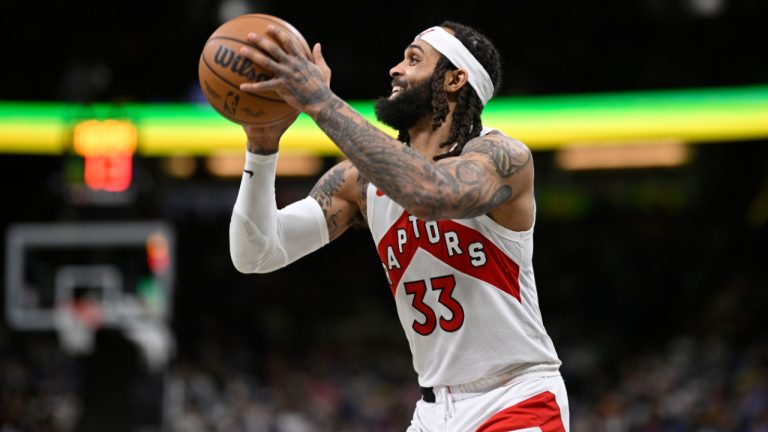
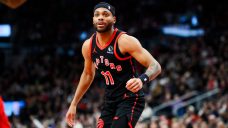
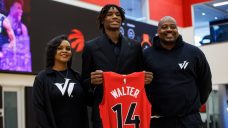
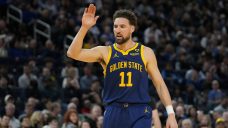
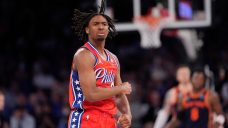

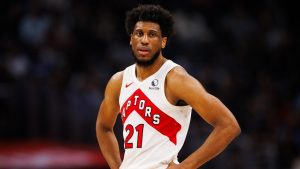



COMMENTS
When submitting content, please abide by our submission guidelines, and avoid posting profanity, personal attacks or harassment. Should you violate our submissions guidelines, we reserve the right to remove your comments and block your account. Sportsnet reserves the right to close a story’s comment section at any time.